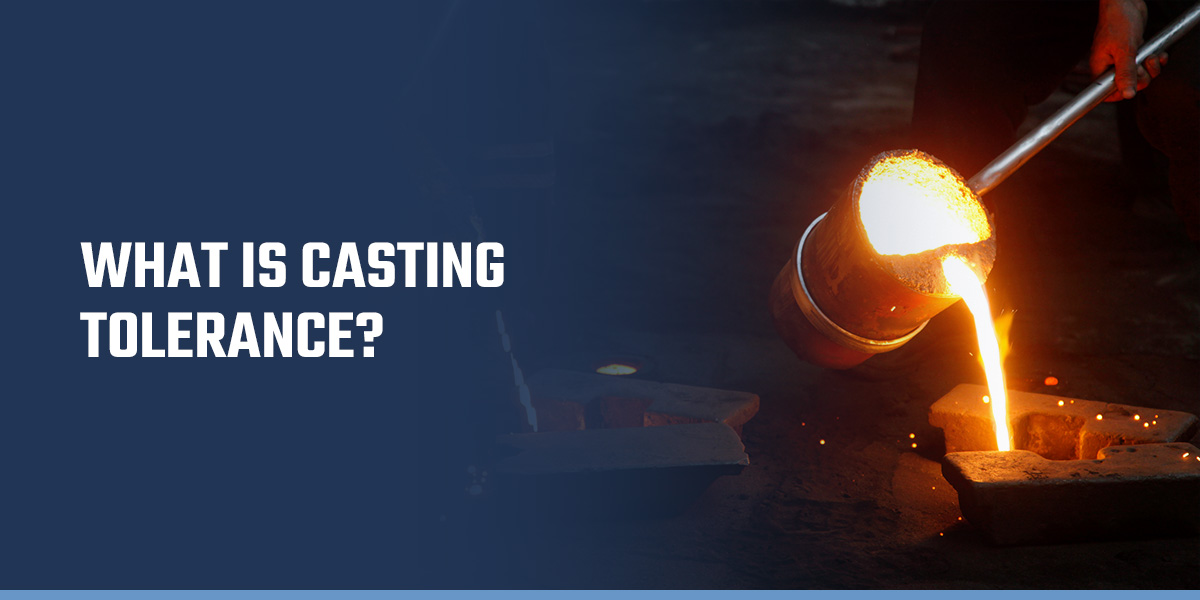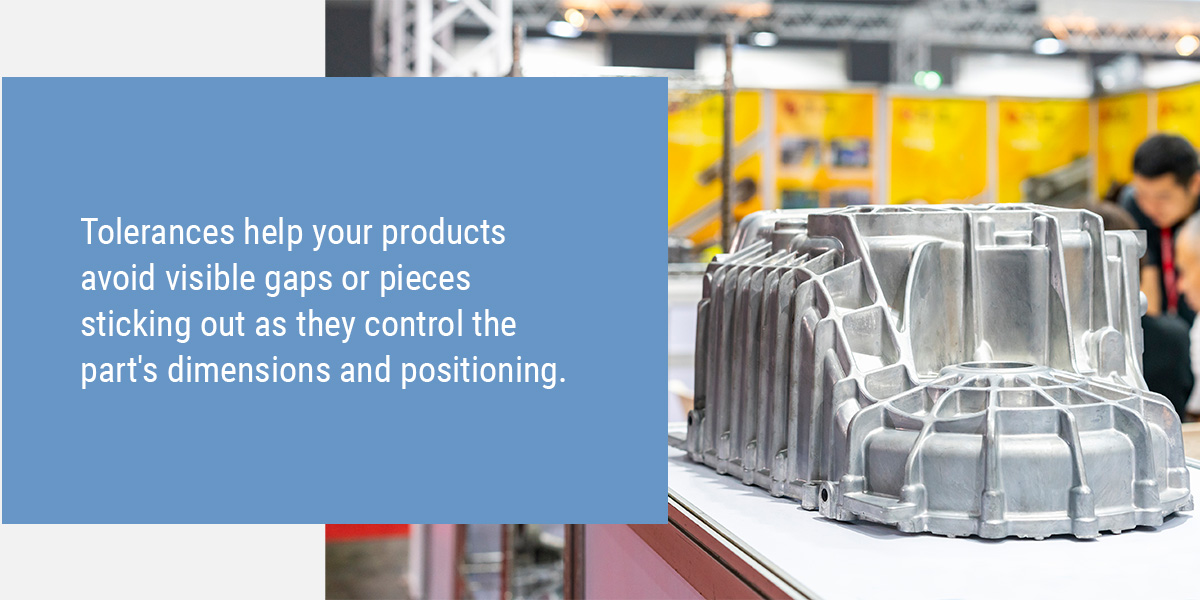Metal casting is a vital process in manufacturing today. We depend on cast parts in everything from airplanes and cars to pumps, valves and household items. Because castings are used in many essential components across various industries, they must meet specific quality standards to be safe and operate correctly. Part of these standards is the tolerances of a casting. Tolerances refer to the accepted variations in the dimensions of a part.
Tolerances cover every aspect of casting, from its flatness and length to the diameter and placement of holes and openings.
What Is Tolerance in Metal Casting?
Casting tolerance is the accepted deviation from the desired physical dimensions of a part. It is the minimum or maximum range of measurements a product can achieve in various dimensions. Tolerances allow for slight unavoidable deviations in the dimensions of a casting. These unpreventable deviations form during the metal casting process and can result from alloy chemistry variations, furnace temperature fluctuations and different cooling rates. The more precise the part needs to be, the lower the tolerance and the closer to the desired casting dimensions. If the dimension variations are too high, it can weaken the casting, making it unfit for use.
Manufacturers use tolerances to create products. If you are designing a product with holes, the manufacturer needs to know various tolerances to manufacture the part properly. For example, how much variation is allowed in the diameter of the hole before it affects the part’s functionality? It is the same for the placement of the hole. How different can the hole placement be before functionality is affected? The more detailed the tolerances, the easier it is to manufacture a part as it gives the manufacturer precise measurements to follow.
Metal casting tolerances also vary depending on the type of material and process used. Different associations have their own guiding standards. Aluminum casting tolerances should follow the Aluminum Association standards, while die casting tolerances are governed by the North American Die Casting Association (NADCA). Further, customers may also have tolerance requirements based on the casting specifications and use of the casting they need.
Tolerances are often calculated at the end of the casting process once the product has cooled. Some parts may experience shrinkage during the cooling process that causes the part to bend, flatten or move out of alignment. Quality testing evaluates the different dimensions of a casting to ensure they meet the required tolerances.
Importance of Tolerances
Having defined tolerances allows you greater control over the production of your products. You can ensure your products’ consistency, accuracy and precision for a quality product every time. Here are six reasons why tolerances are essential in manufacturing:
- Improved fit and functionality: If the parts you manufacture are part of larger systems, they need precise measurements to ensure the final product functions properly. Even minor deviations can make your part incompatible or hamper the system’s functioning.
- Better end product look: Tolerances are vital if you want your products to have clean lines. Tolerances help your products avoid visible gaps or pieces sticking out as they control the part’s dimensions and positioning.
- Leaves room for error: Tolerances allow room for errors while still ensuring the part is functional. Setting tolerance early in the manufacturing process also means you are less likely to remake parts later.
- Reduces costs: You only pay for the materials, tools and labor you need when you have precise tolerances for your castings.
- Speed up manufacturing: Defining tolerances up front may take time, but it makes the manufacturing process faster. Inconsistent products and mismeasurements may require new parts, which can slow down manufacturing significantly.
- Makes manufacturing easier: Tolerances give manufacturers clear guidelines to follow when manufacturing your parts. This ensures you receive the desired product. Also, if manufacturers know that they only have to reach a certain tolerance, they can spend less time focusing on achieving high levels of precision.
How Is Tolerance Calculated in Casting?
Several variables affect tolerances in casting. The type of metal, the casting methods, industry standards and customer requirements all affect the acceptable variances in dimensions. How the part will be used can also play a role. Some equipment and systems need exact parts, meaning the tolerances may be quite small. Typically the larger the part, the greater the variances can be.
Common Tolerances in Metal Casting
Tolerances define every part of a casting regardless of its shape. This includes any holes, curves and prongs that may be part of the casting. Here are some of the most common tolerances in metal casting:
- Flatness: This tolerance looks at the variance from a flat plane. Some metals may shrink during cooling and cause castings to curve slightly. The type of metal alloy and the physical structure of the part will determine the flatness tolerance.
- Straightness: This differs from flatness as it refers to how straight a casting is rather than how flat it is. Certain castings are more likely to bend during cooling than others. Longer castings may be more likely to bend.
- Parallelism: If your casting design has prongs, they must remain aligned. Too far out of alignment, and the prong may not function properly.
- Roundness: Also called “out of round,” this tolerance focuses on how circular a casting is. Some castings can lose their roundness during cooling or tooling, becoming more oval, oblong or square.
- Concentricity: Cylindrical parts with precise concentricity are often used to manage the vibrations of rotating components. Concentricity is calculated by measuring the distance between the axes. Straightness and roundness also play a role in concentricity. Each end needs to be the same level of roundness, with the area between them being straight.
- Holes: Typically, hole tolerance refers to the roundness of a casting hole. For deep holes, it also looks at the diameter of the hole’s interior compared to the opening. Openings must be the same as the internal diameters to ensure the proper fitting and functioning of the parts. Longer holes may be prone to concavity where the hole opening is smaller than the hole’s interior.
Quality Testing With Warner Brothers Foundry
Investment casting tolerances in metal casting are vital, especially in industries where precision and accuracy are essential. The military, automotive, aerospace, mining and manufacturing industries rely on precise metal castings for various products and equipment. Warner Brothers Foundry is dedicated to quality and precision. As we focus on non-ferrous castings, we use X-rays to see if our castings meet a quality standard.
We follow strict quality processes and standards to ensure our castings meet your requirements. If they don’t, we will replace and remake the casting at no extra charge.
Contact our team today to discuss your tolerance requirements and how we can help!




